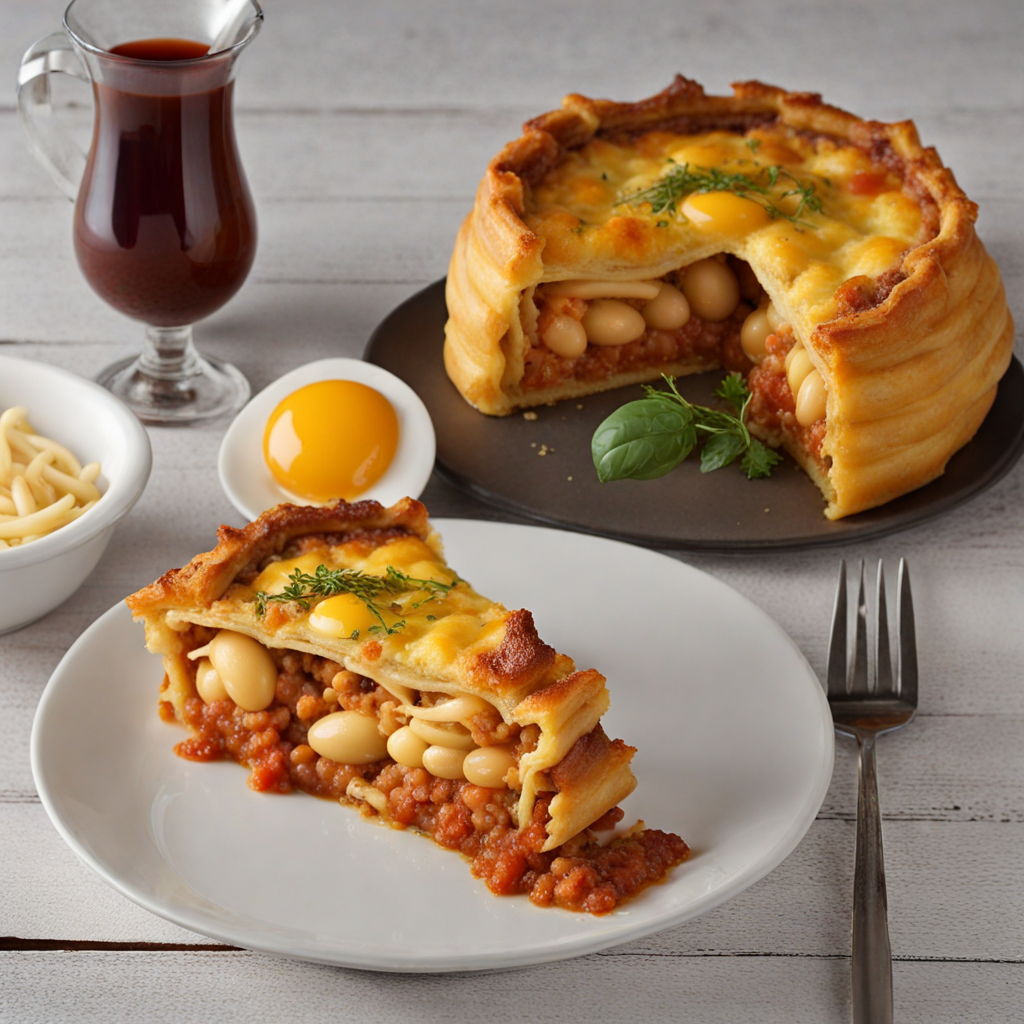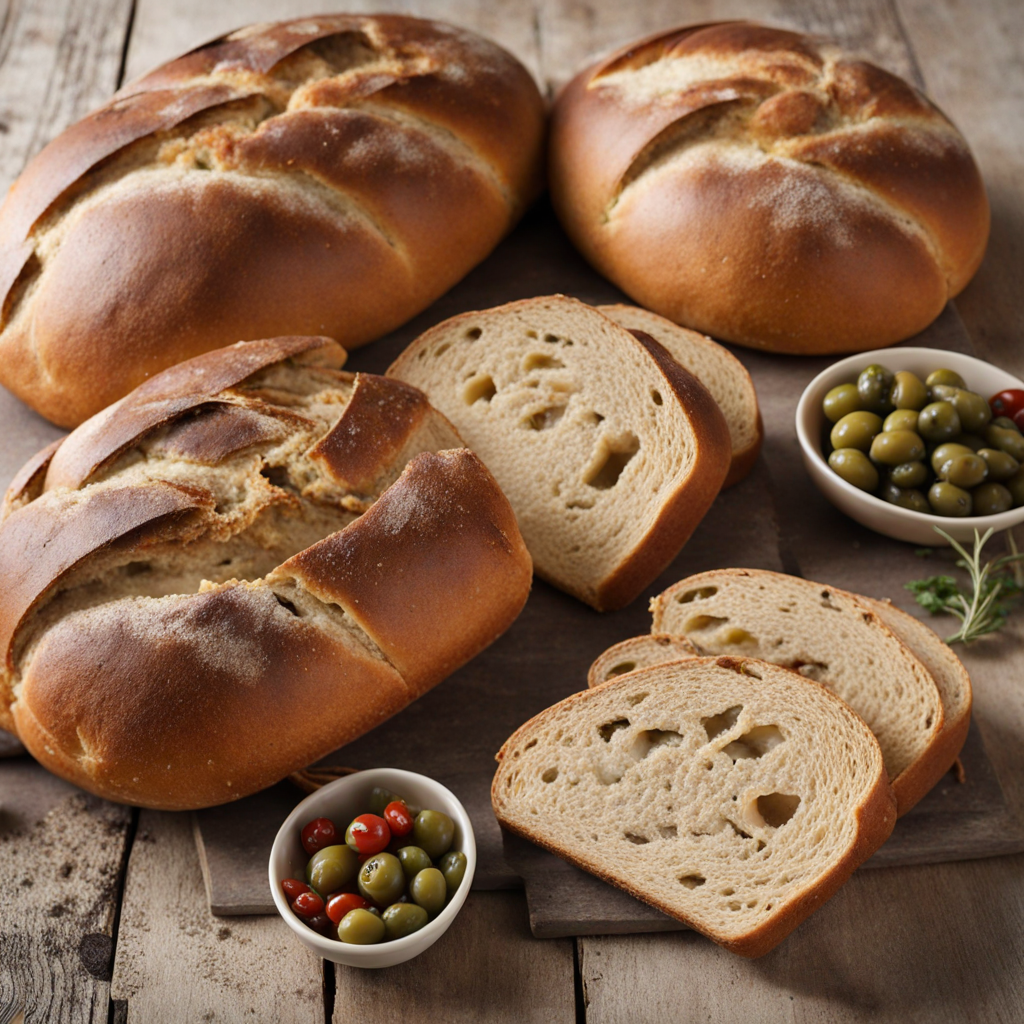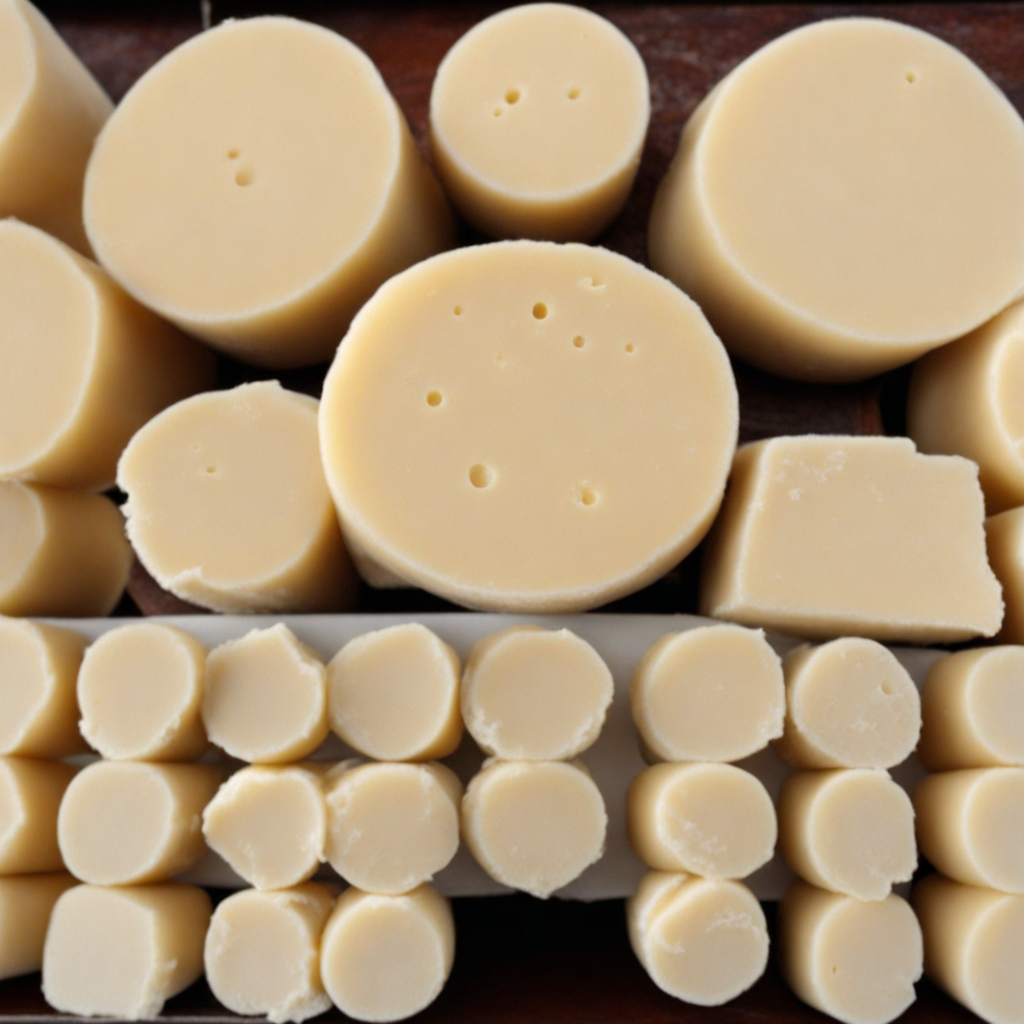Timpana
Timpana is a traditional Maltese dish that beautifully encapsulates the island's rich culinary heritage. This savory pastry is made with a flaky, golden-brown crust that encases layers of flavorful fillings. Typically, the base consists of a shortcrust pastry that is both tender and crisp, providing a perfect contrast to the hearty ingredients within. The filling often features a combination of macaroni, minced meat, and a medley of vegetables, all harmoniously seasoned with aromatic spices and herbs, creating a warm and inviting aroma when baked to perfection. One of the standout aspects of Timpana is the unique blend of flavors and textures it offers. The macaroni, usually combined with a rich tomato sauce, delivers a comforting, creamy element, while the minced meat—often beef or pork—adds a savory depth. The inclusion of ingredients like peas, eggs, and sometimes even local cheese contributes to the dish’s complexity, ensuring each bite is a delightful experience. The mixture is often enhanced with a hint of nutmeg or cinnamon, adding an unexpected twist that surprises the palate. Timpana is not just a dish; it's a celebration of Maltese culture and tradition, often enjoyed during family gatherings and festive occasions. Served hot, it can be sliced into generous portions, making it an excellent choice for sharing. As you dive into this culinary experience, you'll find that Timpana embodies the spirit of Malta, showcasing the island's love for hearty, comforting food that brings people together around the table.
How It Became This Dish
The Engaging History of Timpana: Malta's Culinary Jewel Origins: A Fusion of Cultures Timpana, a traditional Maltese dish, is a delightful representation of the Mediterranean's rich culinary heritage. Its roots can be traced back to the 18th century, intertwining influences from various cultures that have touched Malta throughout its storied history. The island's strategic location in the heart of the Mediterranean made it a melting pot of civilizations, including the Phoenicians, Romans, Arabs, Knights of St. John, and even the British. The name 'timpana' itself is derived from the Italian ‘timpano,’ which refers to a type of pie baked in a deep dish. This connection to Italian cuisine is significant, given Malta's geographic proximity to Italy and the historical ties that have existed between the two nations. The Arabs, who ruled Malta from the 831 AD until the Norman conquest in 1091, are credited with introducing many staple ingredients that would become integral to Maltese cuisine, such as rice and spices. These influences would later merge with the Italian culinary tradition, leading to the creation of timpana. Cultural Significance: A Dish of Celebration Timpana is more than just a dish; it is a symbol of Maltese culture and identity. Traditionally prepared for special occasions, weddings, and festive gatherings, it embodies the spirit of communal dining and hospitality. The dish is often served as a centerpiece during family gatherings, showcasing the importance of food in Maltese social life. It represents the island’s agricultural bounty, as it often incorporates locally sourced ingredients, including pasta, meat, and seasonal vegetables. The preparation of timpana can be a communal activity, bringing families and friends together. In many Maltese households, the process of cooking this dish is passed down through generations, with each family adding its own unique touch, creating variations that reflect personal and regional preferences. This aspect of timpana highlights the importance of family traditions and the passing down of culinary knowledge, making it a cherished part of Maltese heritage. The Ingredients: A Symphony of Flavors At its core, timpana is a baked pasta dish, typically made with macaroni, but it can also feature other types of pasta. The filling often includes a savory mixture of ground meat (usually beef or pork), onions, tomatoes, and a medley of spices. Some variations incorporate hard-boiled eggs, olives, or even béchamel sauce for extra creaminess. A distinctive feature of timpana is the use of a pastry crust, which encases the filling and provides a delightful crunch that contrasts with the soft, flavorful interior. The choice of ingredients reflects the island's agricultural practices and the seasonal availability of produce. For example, during the summer months, fresh vegetables such as zucchini or peas may be added to the filling, imparting a vibrant freshness to the dish. The use of local cheeses, such as ġbejna (a type of cheese made from sheep's milk), can also enhance the flavor profile, showcasing the island's dairy traditions. Development Over Time: Evolving Traditions As Malta entered the 20th century, the popularity of timpana continued to grow, and it became more widely recognized as a national dish. Its presence in local bakeries and restaurants became commonplace, and the dish was often featured in cookbooks that sought to preserve traditional Maltese recipes. This period saw the emergence of new interpretations of timpana, with chefs experimenting with different ingredients and cooking techniques. The post-World War II era brought about significant economic and social changes in Malta. With increased tourism and globalization, the culinary landscape began to shift. Traditional dishes like timpana were adapted to cater to a more diverse palate, leading to variations that incorporated international flavors and ingredients. For instance, some modern versions of timpana may include elements from North African or Middle Eastern cuisines, reflecting the island's ongoing interactions with different cultures. In the early 21st century, as the slow food movement gained traction globally, there was a resurgence of interest in traditional Maltese cuisine. Timpana found itself at the forefront of this culinary renaissance, as chefs and home cooks alike sought to revive and celebrate the dish's authentic roots. Events such as food festivals and culinary competitions emphasized local ingredients and traditional cooking methods, allowing timpana to reclaim its status as a symbol of Maltese heritage. Contemporary Timpana: A Dish for All Seasons Today, timpana is enjoyed not only during festive occasions but also as a beloved comfort food. Its versatility allows it to be served in various settings, from casual family dinners to upscale dining experiences. Chefs often present their interpretations of timpana with creative twists, such as incorporating seafood or vegetarian options, appealing to modern dietary preferences while maintaining the essence of the original dish. Moreover, the rise of social media has given rise to a new appreciation for traditional dishes like timpana. Food bloggers and influencers showcase their culinary creations online, sharing recipes and stories that connect them to their Maltese heritage. This digital platform has helped to promote Maltese cuisine to a global audience, inspiring a new generation to explore and celebrate the flavors of Malta. Conclusion: A Timeless Culinary Heritage Timpana stands as a testament to Malta's rich history and the enduring power of food to connect people and cultures. From its origins as a simple baked pasta dish to its status as a cherished national treasure, timpana encapsulates the spirit of Malta—a blend of tradition, community, and culinary creativity. As Malta continues to evolve, so too does timpana, adapting to contemporary tastes while remaining rooted in its historical significance. Whether enjoyed in a rustic family kitchen or a modern restaurant, timpana invites everyone to partake in the island’s culinary narrative, bridging the past and present through the universal language of food. In every bite, one can taste the stories of generations, the melding of cultures, and the vibrant spirit of Malta itself.
You may like
Discover local flavors from Malta







